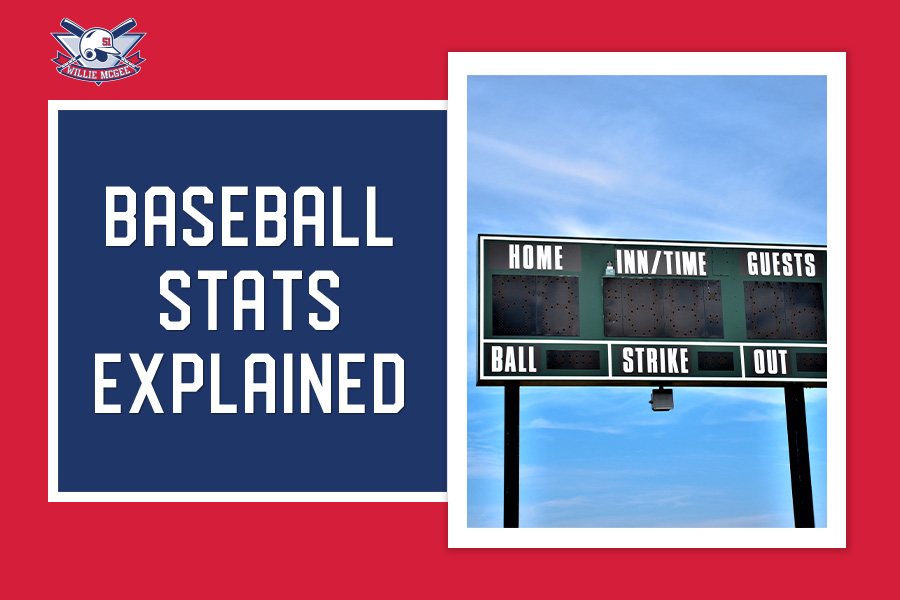Baseball statistics have been recorded since the earliest games were performed. They play a crucial role in evaluating the progress of a baseball player or a team. If you want to discover how the popularity of this sport has progressed through time, this post offers baseball stats explained.
Most fans focus on the overall success of a baseball team. But some want to learn more about an individual player’s performance. Older statistics may not be the most accurate. But recent developments in collecting statistics have significantly improved.
You may have encountered abbreviated words in baseball when you read articles online. Finding out what they stand for may not be easy for everyone. But this article has you covered.
The Basics of Baseball Stats Explained
Statistics have been used for many decades in baseball. Thus, many fans want to learn how to read baseball stats. They also want to see how their favorite team or player is performing throughout the years. If you hope to discover how to learn baseball analytics, this piece of writing is for you.
Below I provided basic and advanced baseball stats explained and commonly used abbreviations. My aim is to teach you how the performance of a baseball player or team is evaluated.
Batting Statistics
As baseball players, we were often taught about the history of this sport and how it all started. Batting statistics in baseball have existed since the very beginning, especially the batting average. It has remained the most universal tool for measuring a hitter’s success.
The best hitter in a baseball game possesses the highest batting average. To measure it, researchers and analysts divide a player’s hits by his overall at-bats to reach a number between 0 and 1.
Another very well-known batting statistic is the slugging percentage. It represents the complete base number a player achieves at bat. This statistic focuses only on the player’s hits. But every hit is not given equal value.
The on-base percentage (OBP) differs from other baseball stats explained here. It evaluates how often a player achieves base. It also records in what way the players achieve base to get a full picture of their performance.
OPS, or on-base plus slugging, is a baseball metric that measures on-base and slugging percentages at once. A player who reaches 800 or above OPS in MLB (Major League Baseball) is regarded as an above-average hitter.
| Rating | OPS |
| Excellent | 1.000 |
| Great | 0.900 |
| Above average | 0.800 |
| Average | 0.730 |
| Below average | 0.700 |
| Poor | 0.600 |
| Awful | 0.550 |
(Source: MetsmerizedOnline)
Pitching Statistics
To evaluate the performance of pitchers in a baseball game, analysts use pitching statistics. They must know some baseball stats formulas to measure a pitcher’s ERA (earned run average). It involves calculating nine times the number of earned runs per innings pitched.
WHIP (Walks and hits per inning pitched) is another commonly used pitching statistic. It shows the technique of a particular pitcher to keep a runner off the basepath. This stat is calculated by summing up the pitcher’s walks and hits and dividing by his total pitched innings.
Another important tool for evaluating a pitcher’s performance and ability to walk batters is the walk rate (BB%). An average pitcher is one who has a walk rate of three to four BB per nine innings pitched.

Fielding Statistics
Fielders catch the ball during baseball games. Their performance is analyzed by how they handle batted and thrown balls, called fielding averages. These metrics include the total number of putouts, assists, and errors.
Defensive runs saved (DRS) is the number of runs a fielder has saved. The best DRS numbers an average fielder can achieve range between 15 and 20 per season. Ultimate zone rating (UZR) compares past fielding data to an average player’s current performance.
Base Running Statistics
Players run from base to base in a baseball team, aiming to throw the ball and score. They are called baserunners. Their performance is evaluated by using a couple of different base running statistics.
A stolen base percentage (SB%) calculates a player’s ability to steal bases. This way, they add significant value to the baseball team. It has never reached above 76%. The stolen base percentage is currently the highest, expected to reach more than 80%.
It’s also important to determine how many runs a player has scored. Baserunners are rewarded with a gained run if they cross the plate and score without considering the way in which they reach base.
Advanced Metrics and Sabermetrics
Many wonder what is sabermetrics in baseball. Advanced baseball metrics are closely connected to sabermetrics. They look beyond the traditionally collected stats and focus on measuring a player’s or a team’s true value.
One of baseball’s most commonly used sabermetrics includes BABIP (batting average on balls in play). It measures a player’s batting average on balls per play. It’s calculated using one of the most well-known sabermetrics baseball formulas (H-HR)/(AB-K-HR+SF).
In advanced metrics and sabermetrics, ISO stands for “isolated power”, calculated by (2B + 2*3B + 3*HR)/AB. Other sabermetric baseball abbreviations include FIP (fielding independent pitching) and WAR (wins above replacement).
Common abbreviations and notations
There are many different baseball stats abbreviations. I mentioned a few throughout the article, but I included additional notations to help you learn more about the statistics used in this sport.
- At-bat (AB) – this abbreviation is used when a batter reaches base in a baseball game due to an error, hit, or a choice made by the fielder.
- Caught Stealing (CS) – when a runner tries to steal the ball after a pitch but is tagged out before reaching the base.
- Extra-base Hit (XBH) – this stat refers to any hits that are not single, including double, triple, and home run hits, to evaluate a player’s offensive power and speed.
- 4-6-3 double play – this is a significant notation used in baseball. It includes the second baseman throwing the ball to the shortstop. Then he passes it to the first baseman.
- R1 (runner on first) – stands for the number of times a batter reaches the plate when a runner is positioned at the first base.
Evaluating player performance using stats
Our performance as baseball players was evaluated using the opinions of professionals. But it also involved data-driven statistics. Some team managers used the statistics of opposing teams to develop pitching and defensive strategies.
We were evaluated on speed, arm strength while throwing the ball, as well as accuracy. Also, a player’s throwing and ball-handling is a major focus point in baseball statistics. Hitting performance, home run, and extra-base potential are also measured during baseball games.

Frequently Asked Questions
How advanced stats impact player contract negotiations and team decisions?
Advanced statistics have shown that the performance of baseball players improves after signing a contract and becoming a part of a team. In contract negotiations, agents and team owners consider a player’s performance during his entire career to predict how he will perform in the future.
How do park factors influence baseball statistics for players and teams?
Park factors are often used to clarify questions people have about baseball players and teams. Some players thrive while playing in a particular park. But that doesn’t determine their overall value and skill set. Thus, park factors should be considered guesses, not accurate predictions.
What are some common misconceptions about baseball statistics?
The most common misconception about baseball statistics revolves around the relationship between ERA and errors. Many believe this key pitching statistic affects a pitcher’s ERA. But people shouldn’t rely only on errors when judging a pitcher’s ERA performance.
Are there any stats focusing on the catcher’s defensive abilities?
Defensive statistics are commonly used in baseball. They are often used to differentiate average defensive catchers from elite defensive catchers. Using this data, researchers discover how teams pay catchers based on their defensive productivity.
Can baseball stats be used to predict player performance in the future?
In the past, researchers have made predictions about how a certain player will perform by comparing him to a similar player and analyzing past performance. Nowadays, analysts can predict player performance in the future by finding useful baseball data and building prediction systems.
Final Thoughts
I provided baseball stats explained to help you gain a richer understanding of this sport and how a player’s performance is evaluated. The future of advanced methodology may present new ways of analyzing information that is easier to read and understand.




